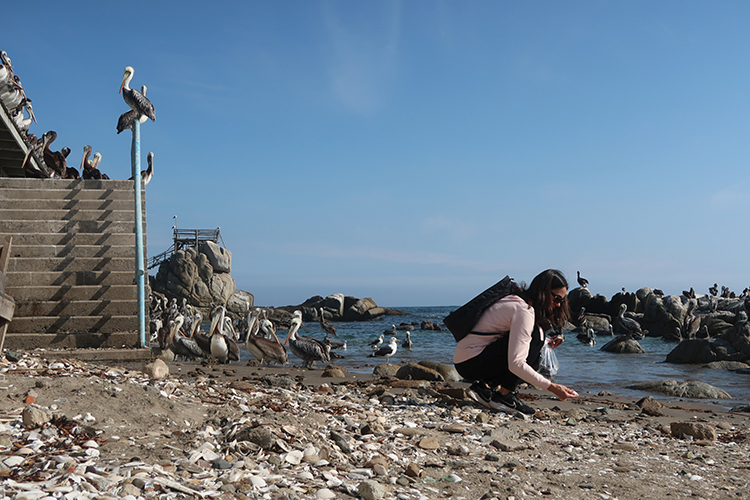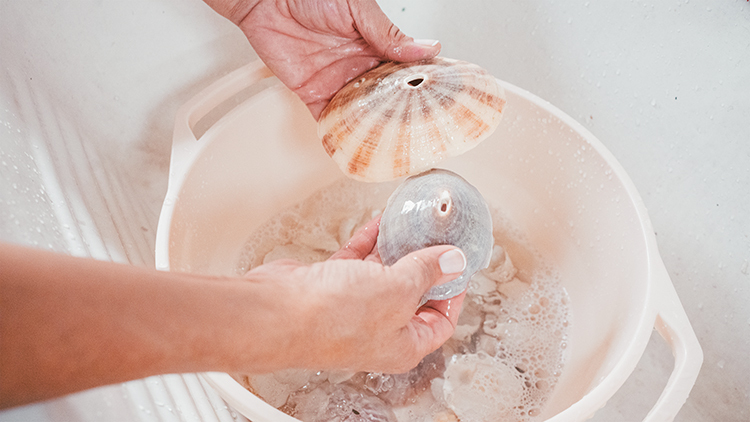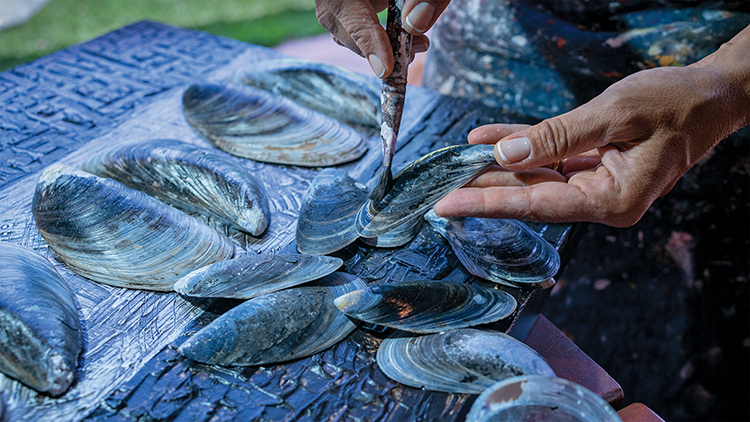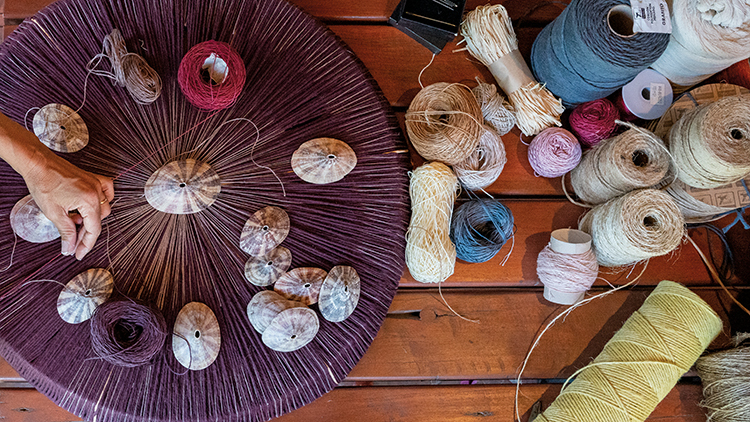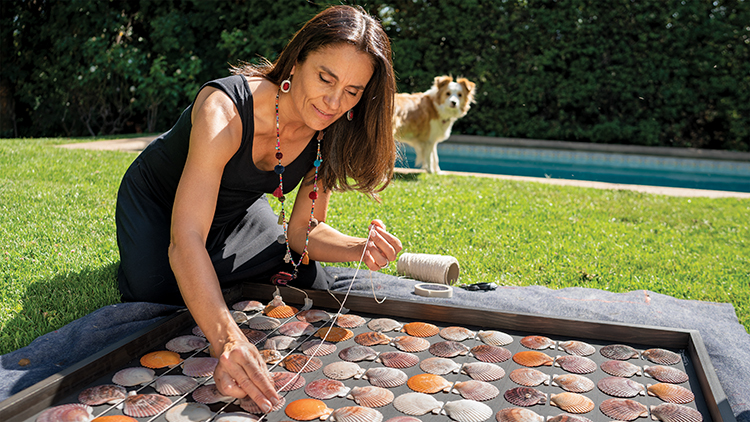
Twenty-one years ago, just days before the birth of my third daughter, Isabella, an artistic window opened to me. I was almost nine months pregnant when my sister Marcela arrived at my house and said, “Claudia, I’ve decided that I’m going to be a sculptor and not a painter, so take all my brushes, my frames … it’s all yours.”
Up until that moment, my interest in art had been nothing special. I was devoted to my family, my therapeutic practice and sports. As a psychologist, I was in charge of educational projects and working with different institutions, such as schools, universities, foundations and the Ministry of Education of Chile. And, as an athlete, I played for the national hockey team. I had no time for art.
The invitation from my sister pushed me into a creative adventure. Being the mother of three children forced me to find some spare time, and I started to go two, and then three, times a week to the art room at my mom’s house. I spent a year painting on my own, exploring colors and textures, without any judgment or critique.
For many years, I painted in total freedom. I filled my house with paintings and held multiple painting exhibitions in cafes, restaurants and community cultural centers.
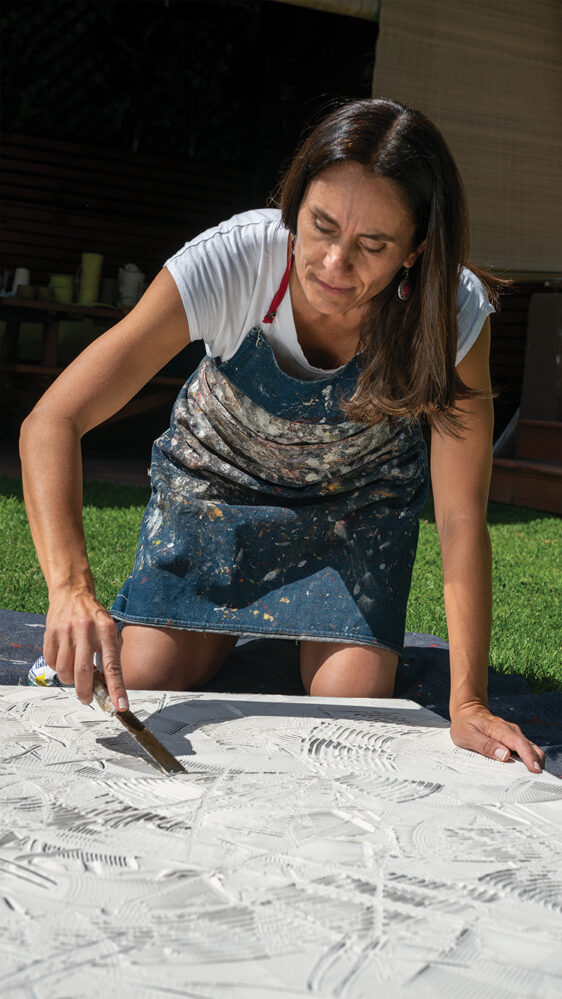
Then, another unexpected event happened: A friend of mine invited me to participate in a workshop led by an expert of the Japanese embroidery technique sashiko. I learned to embroider, absolutely amazed by the beauty and elegance of the threads and patterns.
At the end of the course, we finished the workshop with a visit to an exhibition of Sheila Hicks, an American artist known for her creative weavings and sculptural textile art that incorporate natural materials and personal narratives.
Attending this exhibit was a turning point in my life. I fell in love with her work and progressively became very interested in all kinds of threads, linens, pieces of cotton, wool and cord. Those elements would become part of my artistic work.
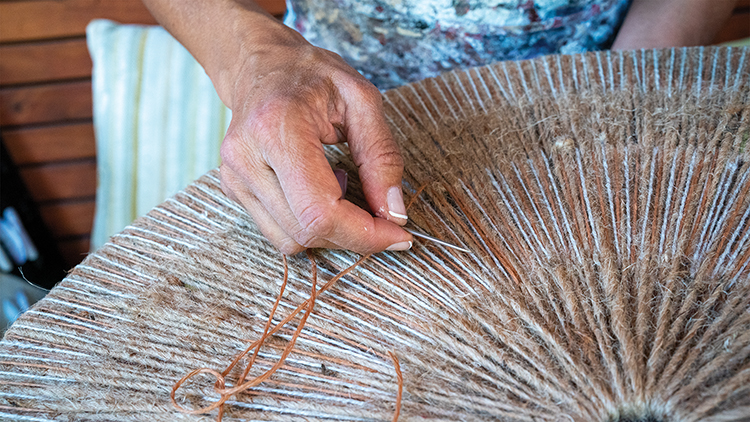
That same year, my daughter Michela invited me to do a loom workshop, where I ended up learning to make looms and weave with threads. I realize now that my passion for art is deeply connected to my Italian and Chilean ancestors.
The love for textile art comes undoubtedly from my Italian paternal family. My grandfather Guerrino Romagnoli, who came to America to try his luck, ended up building a spinning mill with his own hands. He dedicated a great part of his life to working with all kinds of yarns, cotton and wool.
On my Chilean mother’s side, the love of art and creation goes back to my grandmother, Marta, my uncles and my great-aunt. They explored and enjoyed painting, using watercolors, oil and carboncillo (charcoal).
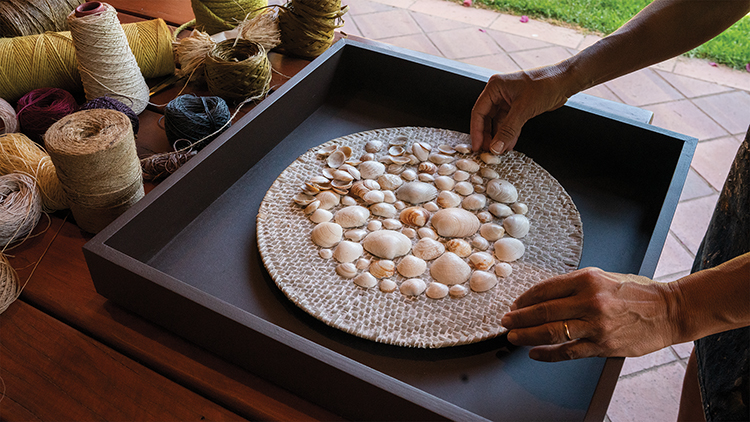
One last unexpected event added to my current body of work. Two years ago, in the middle of the pandemic, a friend reached out to congratulate me on exhibiting some artwork during this challenging period, and also showed me a picture of a Norwegian artist’s work with seashells. I had never seen anything like it before and I was struck by the beauty of the forms and colors.
The following month, when the quarantine was over in Santiago, I went to the beach with my husband. We could finally walk free on the seashore without wearing any masks. It was wonderful … the sea breeze, the sound of the seagulls, the sand and water touching our feet … I stopped and stared at a seashell lying on the sand. I picked it up and I was overwhelmed just looking at it.
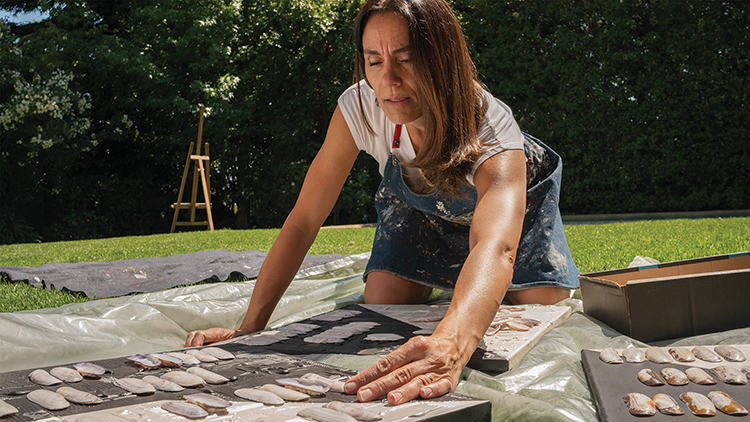
Chile is a small country in the extreme south of the world; a long and thin country bathed by the Pacific Ocean. Fish and mollusks have nourished us for generations and are part of our culture. They’ve somehow shaped our identity. Although I have spent time visiting the Chilean shores, I’d never stopped to observe the seashells in their surprising beauty.
The first seashell I collected was a navajuela (Lat. Ensis macha). I began a process of discovery and appreciation for the different forms, textures and colors of every seashell. I started doing some research about my country’s mollusks and learned to differentiate between their diverse families.
When I found out where all the mollusk waste ended up after consumption, I visited fishing factories and toured fishermen’s coves, and went to beach restaurants and fishmongers. The marine waste and debris would become part of my artistic work: reducing, reusing and recycling. I would spend months exploring and collecting seashells.
In my work with seashells, there are different stages:
- Searching for and collecting shells at the beaches, dunes, shell deposits and fishermen’s coves
- Cleaning and sanitizing the seashells
- Sealing (By applying a light layer of acrylic sealant, I can keep their wet appearance and let their natural colors remain.)
- Exploring and playing with various materials and textures (use of pastes and acrylic paints, and natural fibers such as jute, raffia, sisal, cotton, linen and silk) to give life to the collection of my artistic works

My dog Mila is my best company during my creative process. She accompanies me in silence; she asks me for love and a bit of play, and then she watches me lovingly as I continue working.
Seashells are the protagonists of my artwork. I connect with them, appreciating their beauty, simplicity and solidity. Their silence inhabits my work, transforming it into a meditative practice, from which some poems have emerged.
My history and the influence of nature these days are more integrated into my painting and my textile art. Natural fibers such as jute, sisal and linen — or marine waste and seashells — are present in my art as an ode to the earth.
From February 3-7, I held Uniqueness, my first art exhibition with seashells, at Puerto Velero, one of the most beautiful beaches in Chile. The attendees were surprised and happy with the artistic work. Some of the lovely comments I received include: “So creative — you transform the simple into the valuable … your passion shows and your poems help to respect and value the shells. Congratulations! …Beautiful exhibition, full of love, uniqueness. Quite magical, she radiates a lot of love.”
My artistic work with seashells has been soaked with love, tranquility and a connection to the value of life and death. I share with you some poems that I made throughout these two years of creative play with seashells.
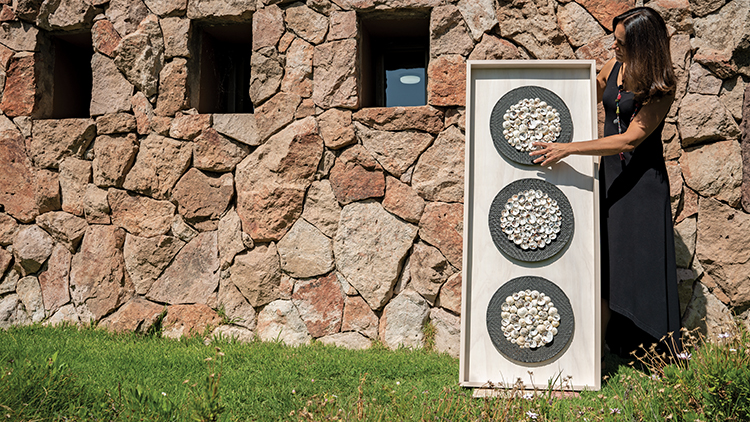
UNIQUENESS
Look … and see if you can find two beings alike. It will take you hours, days … an eternity.
No two beings or shells are identical. The Universe only creates UNIQUENESS.
It’s up to us to learn how to appreciate
the diversity of forms, colors, and
movements.
Life is a dance of uniquenesses, everything is
waiting to be discovered and admired
for what it is.
If only we would could learn to
unconditionally love all the uniqueness
around us and help each other to unveil
our unique gifts and talents.
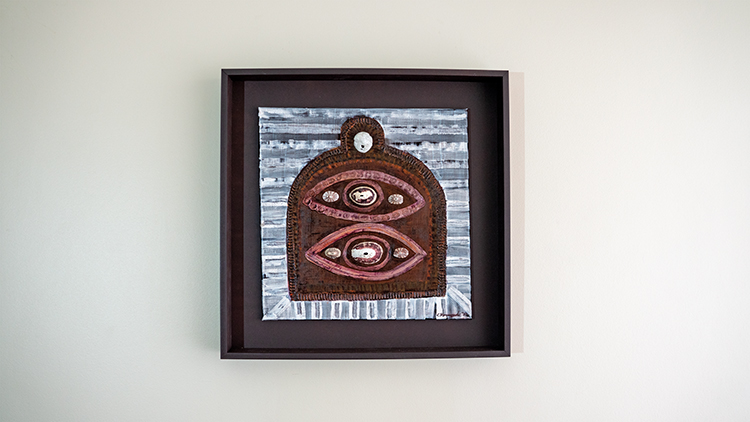
YOU SURPRISE ME IN DEATH
I have found you in death, in silence, still.
I had never “seen” you in my life.
Only now, in the stillness of your inert body, which once housed Life … I find you, I appreciate you, I love you.
I love your beauty, your simplicity.
I love your uniqueness, your soft colors and firm textures.
You surprise me in death.
From today, when you offer your Being to be food in my home.
I promise to serve you with respect, appreciation and gratitude.
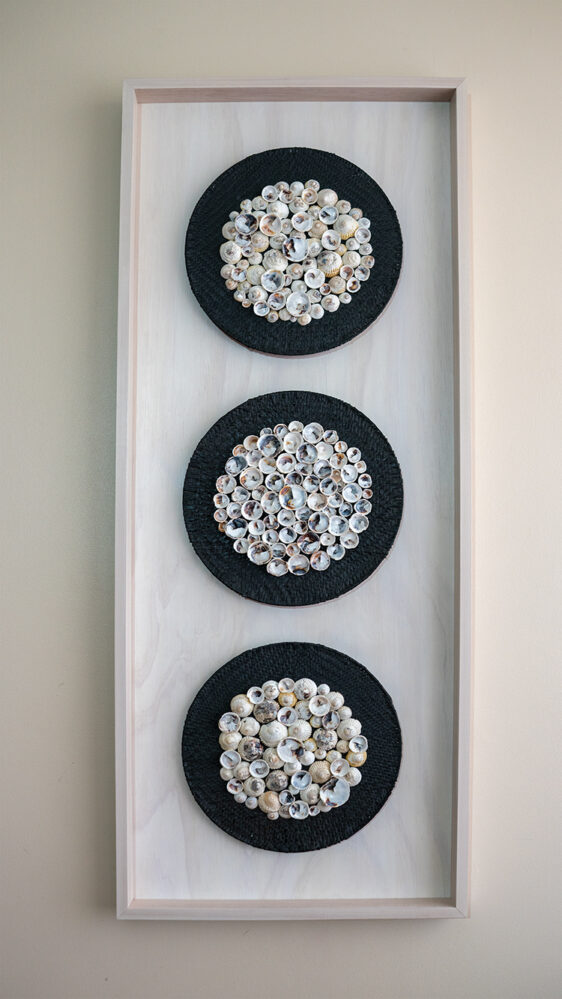
STOP
A few days ago Fissurella told me:
Stop …. and listen to the sound of the sea … Lower your gaze and let it
inside you.
Find yourself in the stillness, let yourself be rocked by the waves and
listen to how you feel.
Breathe in and make space for what is in you…
Everything is fine, joys and pains are part of life.
Breathe and in the stillness accompanies what nests in you today.
Life is an eternal movement, like the waves in the sea.
Learn to let yourself be rocked by the waves and movements of life. Stop, breathe and find the calmness that is in you.
Cultivate your tranquility, connect with your strength, appreciate your
beauty and uniqueness.
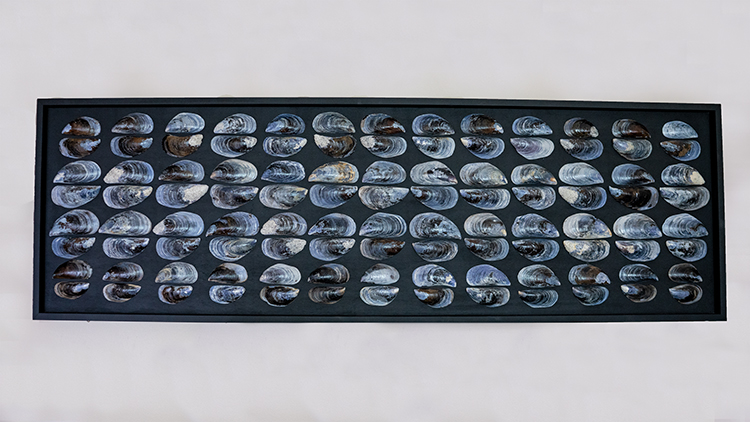
THERE IS BEAUTY EVERYWHERE
If we only knew how to observe …
If we only learned to stop, breathe and look
around us.
Surely we would find ourselves face to face with
beauty.
With the beauty of Life and Death.
There is beauty everywhere.
Open your eyes and become aware of the beauty
that is in you and close to you.
Open your eyes and be thankful for existing
together with others.
Be grateful to be part of Life’s journey. There is beauty everywhere.
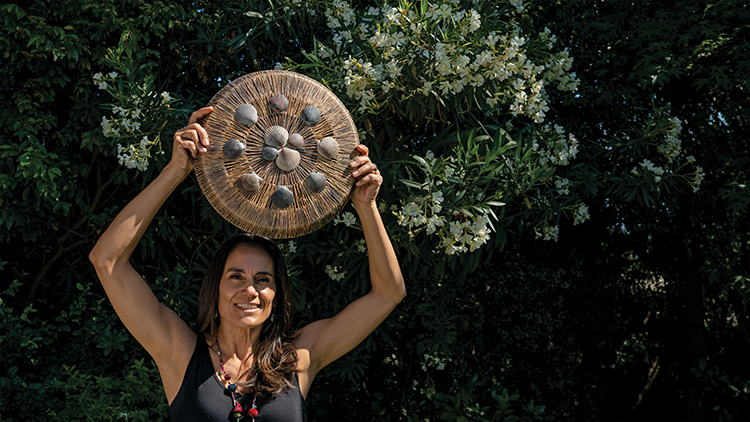
STILLNESS, MOVEMENT AND CHANGE
You have always known how to let yourself be rocked by the movement of the waves. At times you enter the stillness of the depths of Life.
At times you let yourself be dragged by the currents and waves of it.
I would like to learn that wonderful skill from you.
Let myself be rocked by the movements and changes of Life. Adapt to stillness and constant movement.

